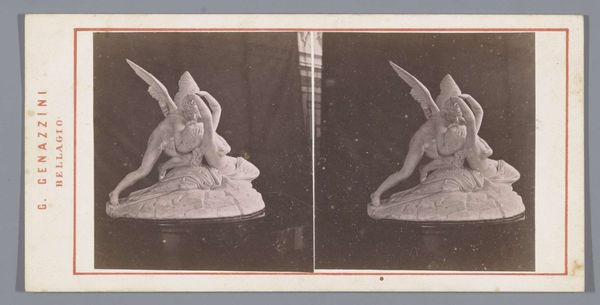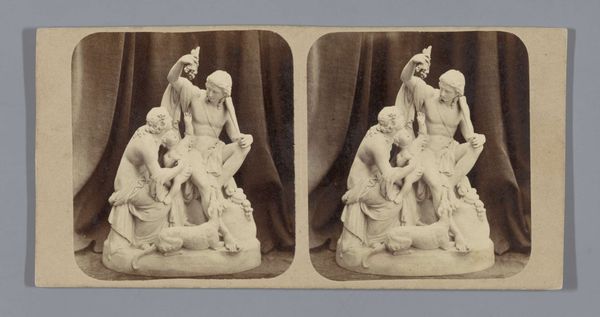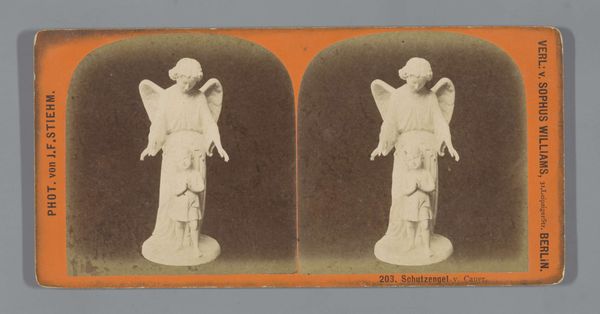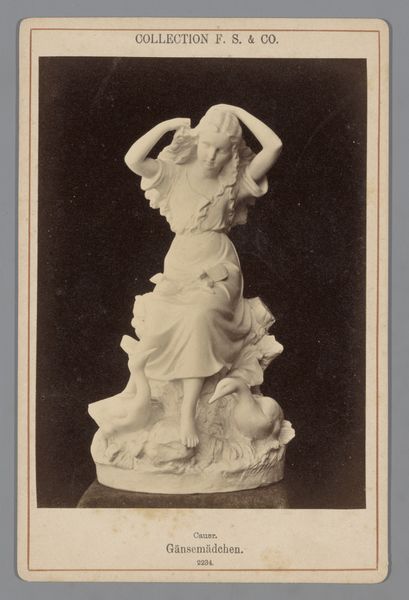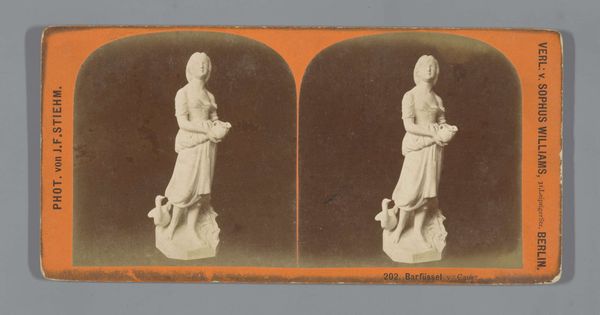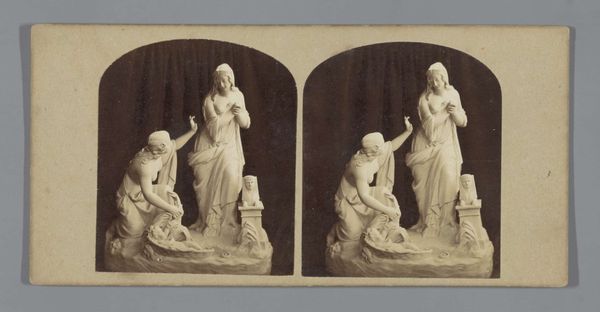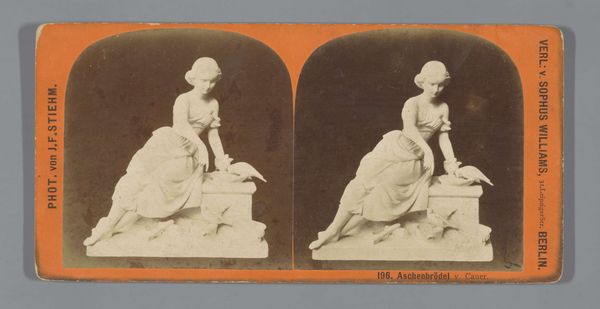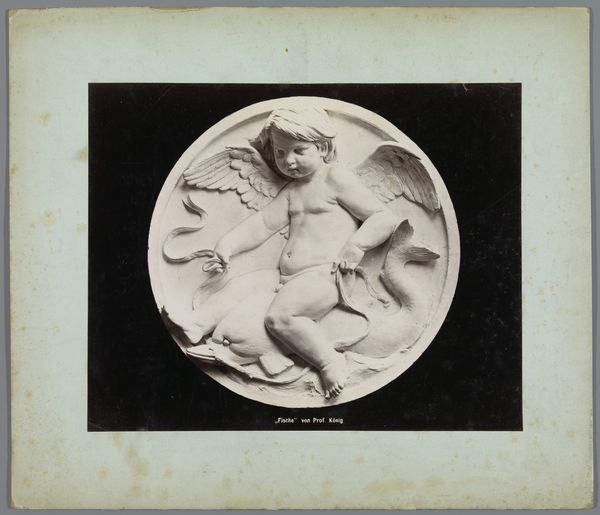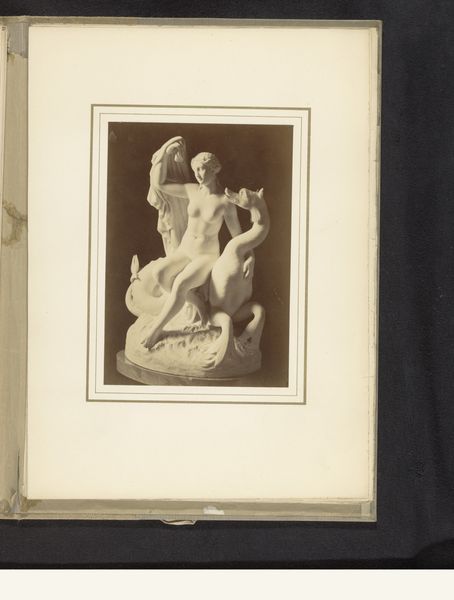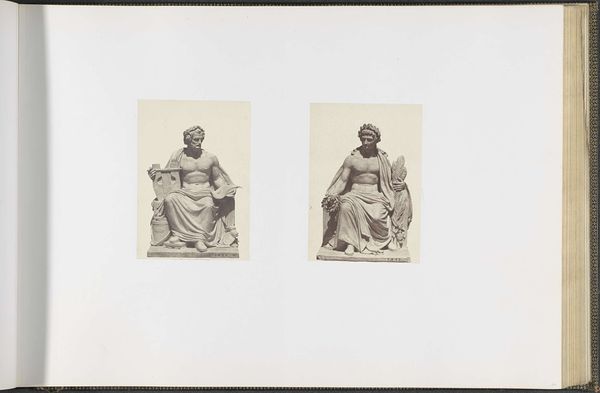
photography, sculpture, gelatin-silver-print
#
portrait
#
narrative-art
#
neoclassicism
#
photography
#
sculpture
#
gelatin-silver-print
Dimensions: height 85 mm, width 176 mm
Copyright: Rijks Museum: Open Domain
Editor: This photograph from between 1858 and 1893, captured by Alfredo Noack, presents Adamo Tadolini's sculpture "Amor and Psyche" in the Villa Carlotta. The albumen print itself has a certain subdued feel... it mutes the bright Neoclassical whiteness. How does this image speak to you? Curator: This photograph speaks volumes about the democratization of art through reproduction and the power dynamics embedded in its display. Consider the original marble sculpture versus this easily distributable gelatin-silver print. It allowed for wider consumption of Neoclassical ideals and aesthetics. Think about who could afford to commission or even visit Villa Carlotta, and who could instead possess this photograph. Editor: That’s interesting, because I was primarily focused on the artistic representation of the myth. Does focusing on this photographic reproduction change how we perceive the original artwork itself? Curator: Absolutely. The choice of material matters immensely. Gelatin-silver prints, with their unique tonal range, render the sculpture differently than seeing the cool marble in person. The materiality of photography introduces questions of authorship, labor, and commodity. Who is truly "making" the art here? Is it Tadolini, Noack, or the photographic assistants and printers? Editor: So, you are less concerned with the romantic narrative depicted and more with the industrial processes behind its availability? Curator: Precisely. The romantic narrative serves as the *content*, but the photographic process and its circulation are the *context*. The commodification of art is key. How does mass reproduction affect the perceived value, or even the aura, of the original sculpture? Editor: I never thought of it that way, I am learning the focus shouldn't just be the image, but also how that image came to exist. Curator: Exactly. Now consider who possessed and consumed such images and what ideologies they carried into their homes. This brings a whole new understanding to the term ‘art appreciation,’ wouldn’t you say?
Comments
No comments
Be the first to comment and join the conversation on the ultimate creative platform.
